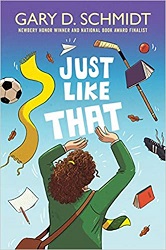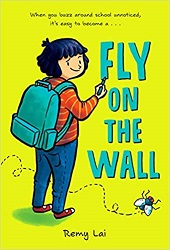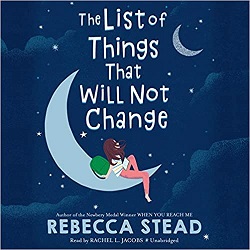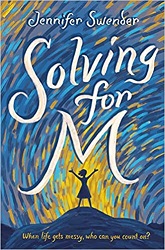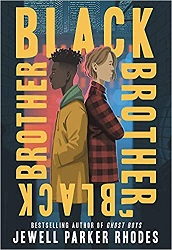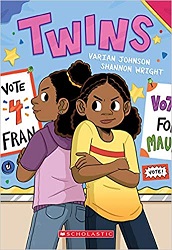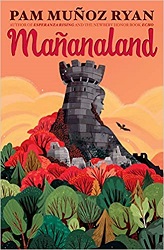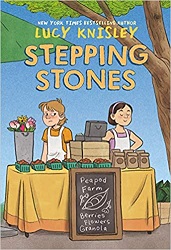Review of Just Like That, by Gary D. Schmidt
by Gary D. Schmidt
Clarion Books, 2021. 387 pages.
Review written March 19, 2021, from a library book
Starred Review
This book is set in 1968, during the Vietnam War, and after the events in The Wednesday Wars and Okay for Now. In this book, we’re following Meryl Lee Kowalski, and the first thing we learn is that one of the characters from the other books, one who had become very important to Meryl Lee, has died suddenly in a freak accident. Oh, and there’s even a nod to Lizzie Bright and the Buckminster Boy, including a character from the Buckminster family (though this is years later).
You do not have to have read the earlier books (although this book makes me want to go back and reread them), and my own memory was hazy, but anyone will understand the painful good memories and the Blank left when thinking of someone you love who is no longer there.
Meryl Lee’s parents decide she needs a complete change. They send her to St. Elene’s Preparatory Academy for Girls in Maine. So all the rest of the cast of characters in this book are new.
And Meryl Lee is the only new girl in eighth grade at St. Elene’s. Her roommate is from such an important family that she shares her last name with her hometown. She makes it very clear how much she misses the roommate she’d been paired with for years who is now living in Budapest with her diplomat family for the year. We can tell Meryl Lee’s going to have a challenge fitting in at her new school.
Alongside Meryl Lee’s story, there’s a parallel story of Matt Coffin, a boy who’s been living by himself in a fisherman’s shack by the water. People haven’t been able to get him to stay at school.
Things might have gone on this way for a very long time, except one early spring evening, when the orange sun was low and the shadows of the pines long, Mrs. Nora MacKnockater came down the steep ridge to the shore beneath her house and settled her substantial rump on a smooth rock large enough to hold it. She watched a flat stone skip in the trough between the low waves – the tide was heading out – turned, and saw Matt Coffin brush back his hair, pull his arm to toss the next stone, see her, and stop.
“Five skips,” she said, “is a creditable throw.”
Mrs. MacKnockater builds a friendship with Matt, starting with skipping stones, then sharing food, then finally giving him a place to stay. But Mrs. MacKnockater is also the headmistress at St. Elene’s Preparatory School for Girls, so Matt and Meryl Lee’s stories are going to converge. Matt has a tragic past and always worries that it will catch up with him. He doesn’t dare put down roots, because if he does, those people will get hurt.
As in so many of his other books, Gary Schmidt pulls you into the emotions of his characters. This book portrays grief in ways that will rend your heart. But it also shows new starts and new friendships. It shows Meryl Lee making new connections with some people you thought were too odious to ever be relatable and others that are surprisingly kind and others who just make you cheer that such good people found each other.
Once again, I’ll spend the year hoping for a Newbery nod for a Gary Schmidt book. Now that I’ve been on the committee, I understand that I can’t predict at all what the committee will decide, but I am at least absolutely sure this book will get consideration. It’s a beautiful and memorable book that explores grief but leaves you with hope.
Find this review on Sonderbooks at: www.sonderbooks.com/Childrens_Fiction/just_like_that.html
Disclosure: I am an Amazon Affiliate, and will earn a small percentage if you order a book on Amazon after clicking through from my site.
Disclaimer: I am a professional librarian, but the views expressed are solely my own, and in no way represent the official views of my employer or of any committee or group of which I am part.
What did you think of this book?
